12 Steps from Seed to Cup
The coffee you enjoy each day has taken a long journey to arrive in your cup.
Between the time they’re planted, picked and purchased, coffee beans go through a typical series of steps to bring out their best.
1. Coffee Nursery
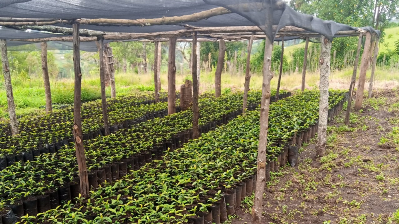 A coffee bean is actually a seed. When dried, roasted and ground, it’s used to brew coffee. If the seed isn’t processed, it can be planted and grow into a coffee tree.
A coffee bean is actually a seed. When dried, roasted and ground, it’s used to brew coffee. If the seed isn’t processed, it can be planted and grow into a coffee tree.
Coffee seeds are generally planted in large beds in shaded nurseries. The seedlings will be watered frequently and shaded from bright sunlight until they are hearty enough to be permanently planted. Planting often takes place during the wet season, so that the soil remains moist while the roots become firmly established.
2. Flowering
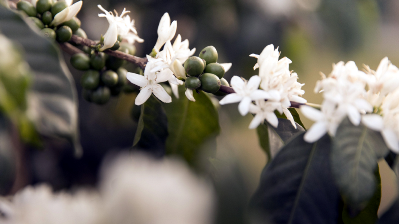 Depending on the variety, it will take approximately 3 to 4 years for the newly planted coffee trees to bear fruit. The fruit, called the coffee cherry, turns a bright, deep red when it is ripe and ready to be harvested.
Depending on the variety, it will take approximately 3 to 4 years for the newly planted coffee trees to bear fruit. The fruit, called the coffee cherry, turns a bright, deep red when it is ripe and ready to be harvested.
Strip Picked: All of the cherries are stripped off of the branch at one time, either by machine or by hand.
Selectively Picked: Only the ripe cherries are harvested, and they are picked individually by hand. Pickers rotate among the trees every eight to 10 days, choosing only the cherries which are at the peak of ripeness. Because this kind of harvest is labor intensive and more costly, it is used primarily to harvest the finer Arabica beans.
3. Processing the Cherries
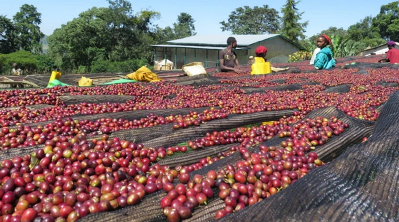 Once the coffee has been picked, processing must begin as quickly as possible to prevent fruit spoilage. Depending on location and local resources, coffee is processed in one of two ways:
Once the coffee has been picked, processing must begin as quickly as possible to prevent fruit spoilage. Depending on location and local resources, coffee is processed in one of two ways:
The Dry Method is the age-old method of processing coffee, and still used in many countries where water resources are limited. The freshly picked cherries are simply spread out on huge surfaces to dry in the sun. In order to prevent the cherries from spoiling, they are raked and turned throughout the day, then covered at night or during rain to prevent them from getting wet.
The Wet Method removes the pulp from the coffee cherry after harvesting so the bean is dried with only the parchment skin left on. First, the freshly harvested cherries are passed through a pulping machine to separate the skin and pulp from the bean.Then the beans are separated by weight as they pass through water channels. The lighter beans float to the top, while the heavier ripe beans sink to the bottom. They are passed through a series of rotating drums which separate them by size.
4. Drying the Beans
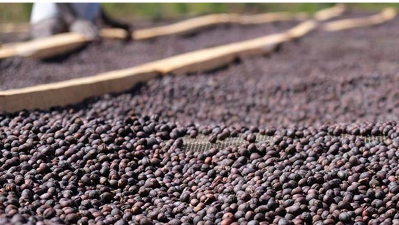 If the beans have been processed by the wet method, the pulped and fermented beans must now be dried to approximately 11% moisture to properly prepare them for storage.
If the beans have been processed by the wet method, the pulped and fermented beans must now be dried to approximately 11% moisture to properly prepare them for storage.
The dried beans are known as parchment coffee, and are warehoused in jute or sisal bags until they are readied for export.
5. Milling the Beans
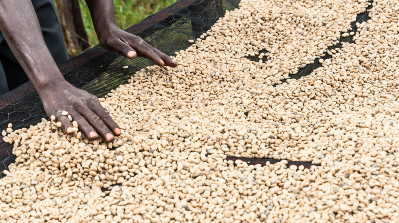 Before being exported, parchment coffee is processed in the following manner:
Before being exported, parchment coffee is processed in the following manner:
Hulling machinery removes the parchment layer (endocarp) from wet processed coffee. Hulling dry processed coffee refers to removing the entire dried husk — the exocarp, mesocarp and endocarp — of the dried cherries.
Polishing is an optional process where any silver skin that remains on the beans after hulling is removed by machine. While polished beans are considered superior to unpolished ones, in reality, there is little difference between the two.
Grading and Sorting is done by size and weight, and beans are also reviewed for color flaws or other imperfections. Beans are sized by being passed through a series of screens. They are also sorted pneumatically by using an air jet to separate heavy from light beans.
6. Exporting the Beans
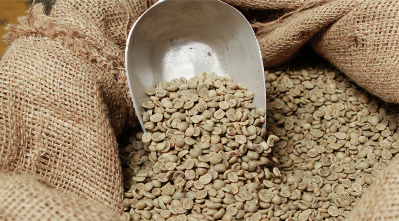 The milled beans, now referred to as green coffee, are loaded onto ships in either jute or sisal bags loaded in shipping containers, or bulk-shipped inside plastic-lined containers.
The milled beans, now referred to as green coffee, are loaded onto ships in either jute or sisal bags loaded in shipping containers, or bulk-shipped inside plastic-lined containers.
7. Tasting the Coffee
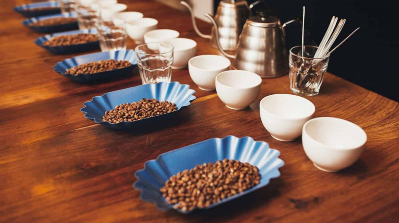 Coffee is repeatedly tested for quality and taste. This process is referred to as cupping and usually takes place in a room specifically designed to facilitate the process.
Coffee is repeatedly tested for quality and taste. This process is referred to as cupping and usually takes place in a room specifically designed to facilitate the process.
Samples from a variety of batches and different beans are tasted daily. Coffees are not only analyzed to determine their characteristics and flaws, but also for the purpose of blending different beans or creating the proper roast. An expert cupper can taste hundreds of samples of coffee a day and still taste the subtle differences between them.
8. Roasting the Coffee
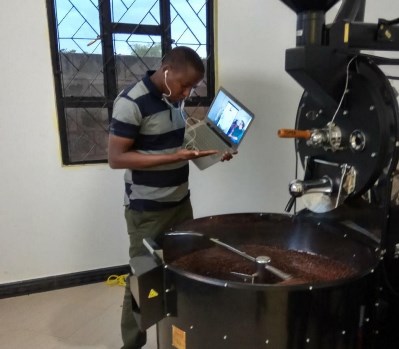 Roasting transforms green coffee into the aromatic brown beans that we purchase in our favorite stores or cafés. Most roasting machines maintain a temperature of about 550 degrees Fahrenheit. The beans are kept moving throughout the entire process to keep them from burning.
Roasting transforms green coffee into the aromatic brown beans that we purchase in our favorite stores or cafés. Most roasting machines maintain a temperature of about 550 degrees Fahrenheit. The beans are kept moving throughout the entire process to keep them from burning.
After roasting, the beans are immediately cooled either by air or water. Roasting is generally performed in the importing countries because freshly roasted beans must reach the consumer as quickly as possible.
Specter coffee are roasted in the following categories: Light roast, Medium roast, Medium-Dark roast and Dark roast.
We have Light Norwegian roast with different temperature depending on the humidity of coffee to get mild, round and delicate taste hint of red-berries and chocolate.
9. Grinding Coffee
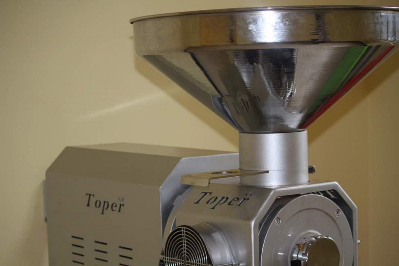 The objective of a proper grind is to get the most flavor in a cup of coffee. How coarse or fine the coffee is ground depends on the brewing method.
The objective of a proper grind is to get the most flavor in a cup of coffee. How coarse or fine the coffee is ground depends on the brewing method.
The length of time the grounds will be in contact with water determines the ideal grade of grind Generally, the finer the grind, the more quickly the coffee should be prepared. That’s why coffee ground for an espresso machine is much finer than coffee brewed in a drip system.
We recommend taking a moment to examine the beans and smell their aroma — in fact, the scent of coffee alone has been shown to have energizing effects on the brain.
10. Packaging
 Our packages come in 250 grams and 500 grams.
Our packages come in 250 grams and 500 grams.
One-way degassing valves are designed to allow air pressure to exit from inside the package while preventing air from entering. Because freshly roasted coffee beans release carbon dioxide, one-way degassing valves allow roasters to package their products immediately without worry of the coffee bag bursting. The flexibility and benefits of flexible packaging bags with the use of degassing valves make them the perfect choice for coffee bag packaging.
11. Brewing
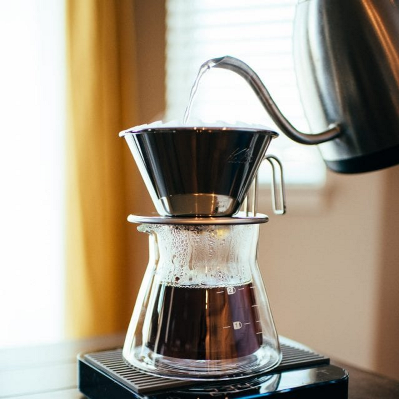 Coffee is personal - the right way to make it is how you like it best.
Coffee is personal - the right way to make it is how you like it best.
That being said, mastering a few fundamentals will help you perfect your technique. From here, we encourage you to experiment with different roasts, origins, or preparation methods.
Here are our tips to brew a classic cup of coffee.
The Equipment: Make sure that your tools — from bean grinders and filters to coffee makers— are thoroughly cleaned after each use.
The Beans: Great coffee starts with great beans. The quality and flavor of your coffee is not only determined by your favorite brewing process, but also by the type of coffee you select.
Freshness: Purchase coffee as soon as possible after it’s roasted. Fresh-roasted coffee is essential to a quality cup, so buy your coffee in small amounts (ideally every one to two weeks).
The Grind: If you buy whole bean coffee, always grind your beans as close to the brew time as possible for maximum freshness. A burr or mill grinder is best because the coffee is ground to a consistent size.
The Water: The water you use is very important to the quality of your coffee. Use filtered or bottled water if your tap water is not good or has a strong odor or taste, such as chlorine.
Coffee-to-Water Ratio: A general guideline is called the "Golden Ratio" - one to two tablespoons of ground coffee for every six ounces of water. This can be adjusted to suit individual taste preferences.
Check the cup lines or indicators on your specific brewer to see how they actually measure. And remember that some water is lost to evaporation in certain brewing methods.
Brewing Time: The amount of time that the water is in contact with the coffee grounds is another important flavor factor.
In a drip system, the contact time should be approximately 5 minutes. If you are making your coffee using a French Press, the contact time should be 2-4 minutes. Espresso has an especially brief brew time — the coffee is in contact with the water for only 20-30 seconds. Cold brew, on the other hand, should steep overnight (about 12 hours).
12. Coffee Cup - Taste, the Goodness
 Prepared coffee begins to lose its optimal taste moments after brewing, so only make as much coffee as you’ll drink. Otherwise, coffee can be poured into a warmed, insulated thermos to be consumed within an hour.
Prepared coffee begins to lose its optimal taste moments after brewing, so only make as much coffee as you’ll drink. Otherwise, coffee can be poured into a warmed, insulated thermos to be consumed within an hour.
Try to enjoy your coffee as thoughtfully as it was prepared - take in the aroma, and notice the flavors in each sip. Many people have been instrumental in bringing it to your cup.
